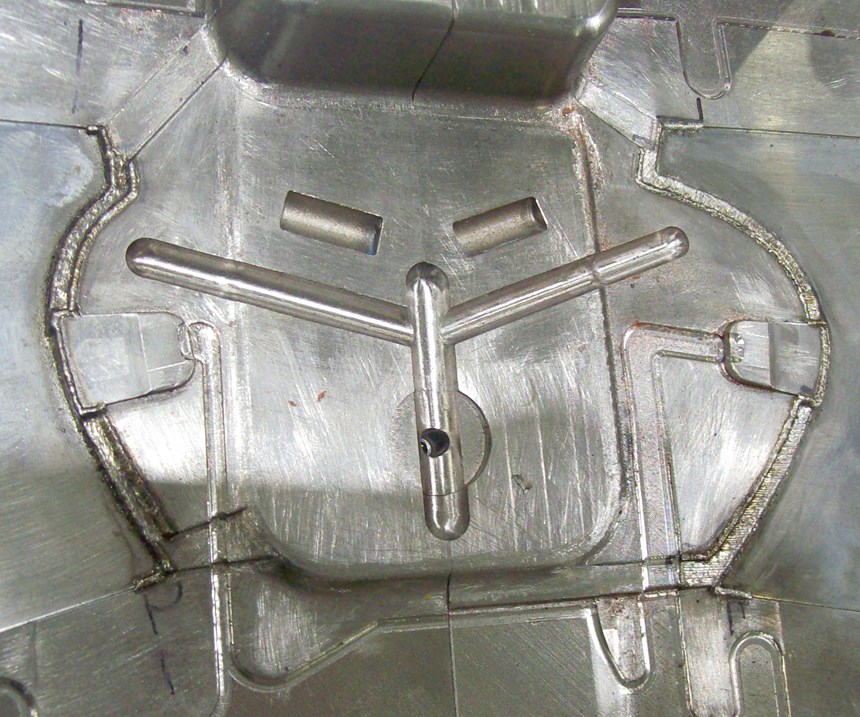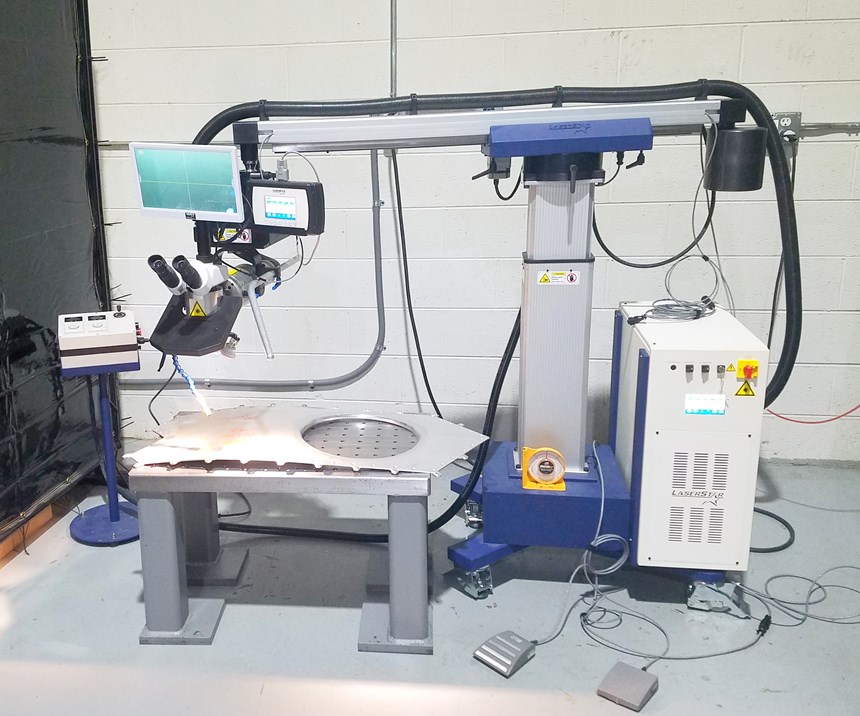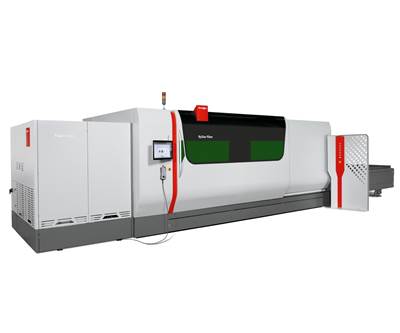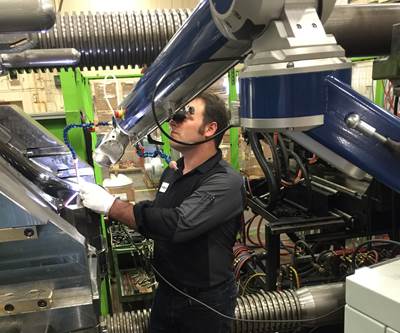Machine Shop Fills Mold Repair Niche with Fiber Laser
After getting calls for plastics injection mold repair services that its MIG and TIG welders couldn’t handle, CMS Inc. acquired fiber laser technology from LaserStar to meet demand.
Share





Over the past 15 years, Complete Machining Services (CMS) Inc. has tried to adapt its precision machining and fabricating services to market demands. Accomplishing that has typically involved acquiring increasingly advanced machining centers and other capital equipment, along with new tooling, controls and software upgrades. Recently, the shop recognized a new demand.
“Last year we began receiving numerous requests for plastics injection mold repair services,” says Jeff Dainty, president and CEO. “Beyond our MIG and TIG welders, this was a capability we did not have. It was obvious there was a lack of contract precision laser welding services in the area for plastic injection molds, which was surprising because the largest concentration of moldmakers in North America resides in Windsor, Ontario, and Detroit, Michigan, close to where CMS is located.”
Meeting an Industry Demand
As it happened, Mr. Dainty and his manufacturing manager were set to attend the 2018 International Manufacturing Technology Show (IMTS) about a week after coming to the recognition about the demand for mold repair services. After researching laser welding systems at the trade show, they settled on LaserStar’s 8700-3 universal jig welding workstation, a micro welding laser system.
“When CMS talked to us at IMTS about expanding their capabilities by adding laser welding for plastic injection mold repair and also tool-and-die maintenance, we explained that they were going to need not just a laser welding machine, but a workstation that provided the flexibility to handle a wide variety of parts and materials,” says Gary Paresky, LaserStar regional sales manager. “That meant they needed at least 300-watt capability that could weld aluminum, and that means a fiber laser. Nd:YAG-type (neodymium-doped yttrium aluminum garnet) lasers are typically 200-watt devices. We directed them to our 8700-3 series fiber laser welding workstation, which provides higher-peak power.”
The fiber laser source on the 8700-3 has a permanently sealed design that protects against dust and dirt, which sometimes is an issue in a job shop environment, Mr. Paresky says. An important feature of the fiber laser is that it produces a sharp, focused light beam that consistently melts a very small area of metal. “The benefit of the technology is that very little heat is generated at the weld point, allowing users like CMS to easily laser weld 0.25 mm from complex, heat-sensitive intricate parts,” he adds.
Because CMS needed to maximize the flexibility of the welder, Mr. Dainty opted to add several options to the workstation, including a tower gantry to ease moving the laser next to the molds, a motorized worktable, and a camera and monitor to aid in training operators.
“Fortunately for CMS, we were able to find an operator with experience using LaserStar equipment, so we were able to start putting work through the process right after it was installed, and we are now successfully producing mold repair work for a variety of customers on a weekly basis.”
The Mold Repair Advantages of Fiber Laser Welding
When Modern Machine Shop heard of CMS’s success with LaserStar equipment, we talked with Mr. Paresky about how fiber laser welding is particularly suited to mold repair work. Here is what he said:
What is involved with plastic injection mold repair?
Plastic injection molds can be expensive to replace, so using a laser welder to repair them can be a huge cost savings. Typically the molds acquire worn areas after constant use or broken edges requiring repair. On a newly machined mold, there are sometimes porosity issues that need to be filled. The laser welder can be used to address these issues by adding filler wire to repair these defects. Once material is added with the laser welder, a final machining of the area is performed to finish the repair. Laser welding can also repair smaller molds or those that can be disassembled. X-, Y- and Z-axis and/or rotary capabilities enable very precise and straight weld beads to be laid down. For larger molds, the laser welder can be rolled right up to where they are in use. A gantry tower with X-, Y- and Z-axis motion — like the one CMS acquired — allows the operator to reach into areas that need repair.
What are fiber laser’s advantages over MIG and TIG welding technologies?
Unlike MIG and TIG welders, laser welders allow for micro-welding into very tight areas. Because laser welding is a noncontact process, as long as the operator can see where they need to weld, they can do it with the laser. The laser welder produces a very small heat affected zone, or HAZ, because it limits the amount of energy to just where it is needed.
What are fiber laser’s advantages over other kinds of laser welders?
Previous-generation technology like flashlamp-pulsed nd:YAG laser welders usually have a limit on the maximum power that can be applied — typically 200 watts. Fiber technology can provide 150, 300, 450 or even 600 watts, which allows for the use of heavier filler wire, speeding up the repair process. Aluminum and beryllium typically need higher power in order to produce good-quality welds, with 300 watts being a common capacity for such applications.
Read Next
10-kW Fiber Laser Platform Provides High Output
Bystronic’s ByStar Fiber laser cutting machine with 10-kW fiber laser is being shown at FABTECH this month.
Read More3 Advantages of Using Pulsed Laser Welding for Mold Repair
Compared to TIG welding, pulsed laser-welding technology is said to enable faster overall mold repair time while maintaining higher metal hardness.
Read MoreBuilding Out a Foundation for Student Machinists
Autodesk and Haas have teamed up to produce an introductory course for students that covers the basics of CAD, CAM and CNC while providing them with a portfolio part.
Read More




























